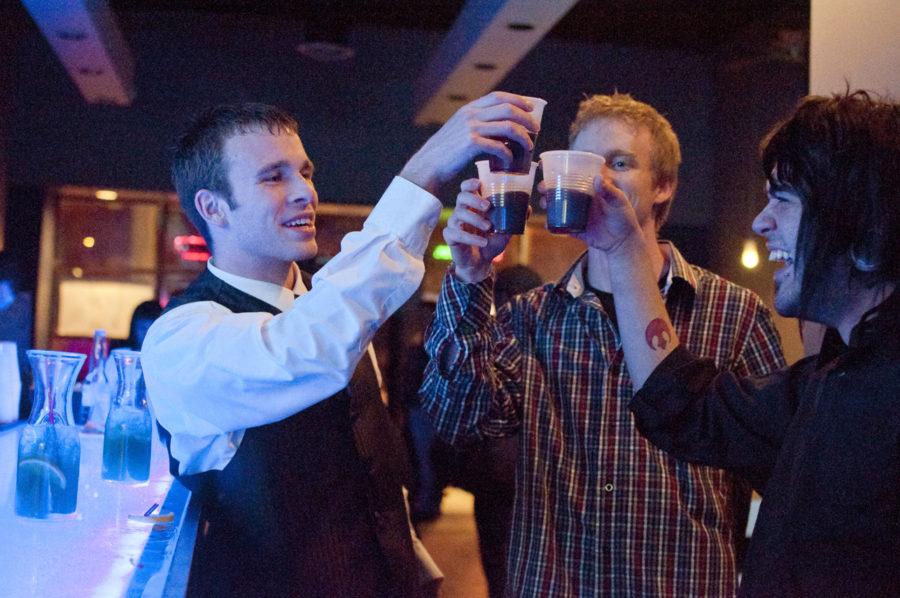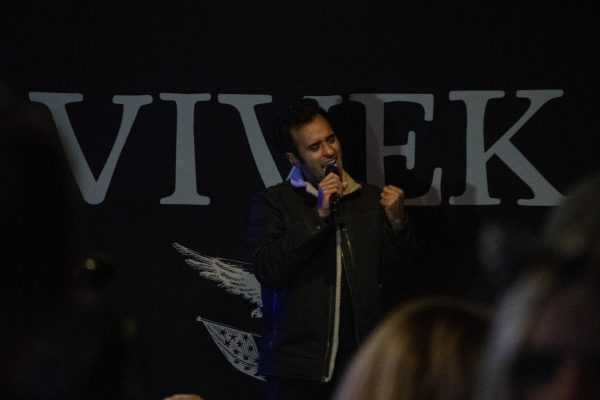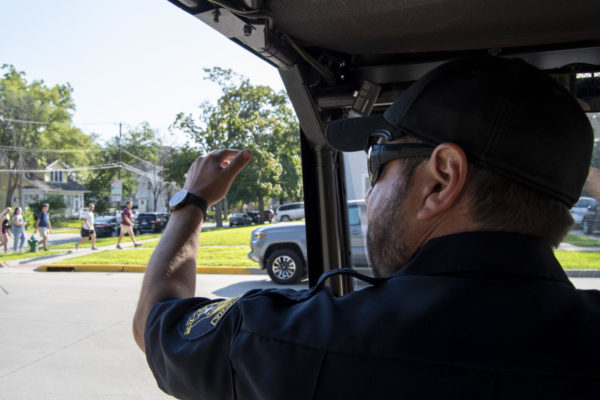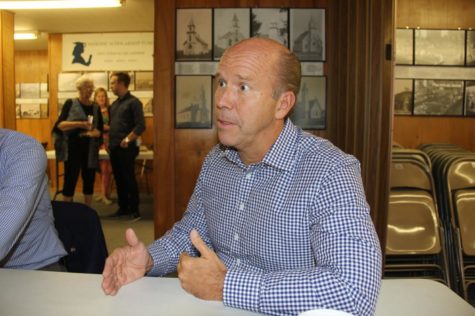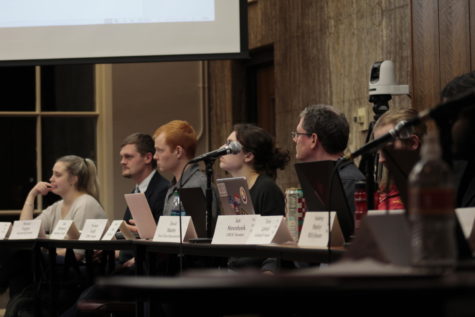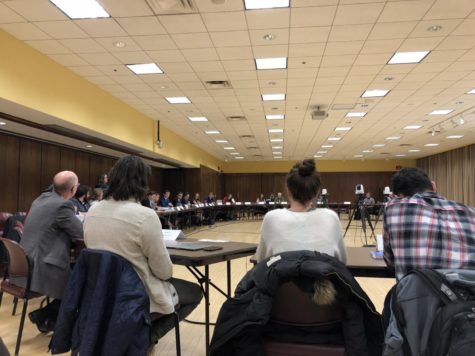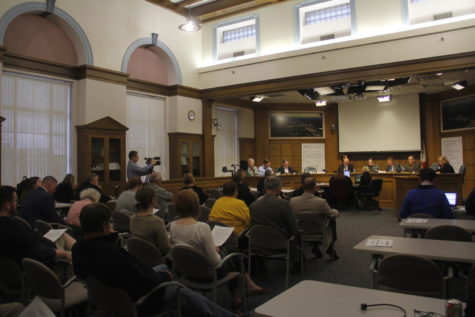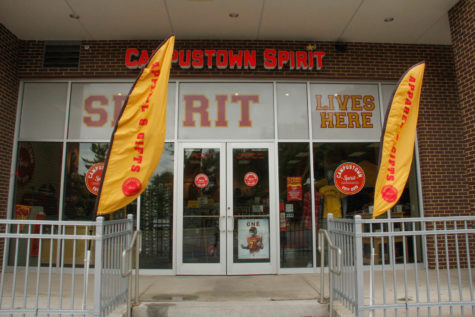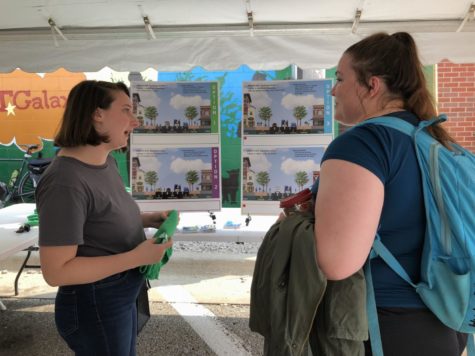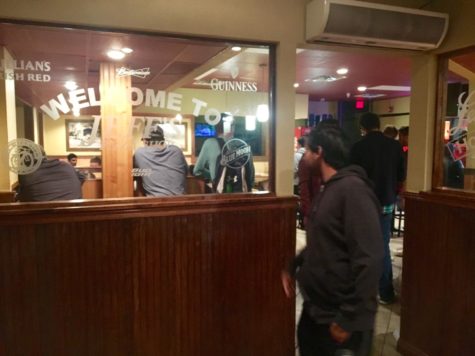Possible ordinance change could affect Campustown clubs
December 13, 2010
Ordinance 3046, Section 17.16: Minors Prohibited on Certain Premises has been on the books since 1984. In light of a string of high-profile, sometimes alcohol-related student deaths, an ordinance change in Iowa City and an upcoming Campustown redevelopment, some believe it’s time for a change.
“It’s a pretty loose system the way we have it written now, and we’re working to tighten it up,” said Lt. Jeff Brinkley, who is in charge of the 11 p.m. to 7 a.m. shift of the Ames Police Department.
Brinkley’s goal is to clearly differentiate what is considered a restaurant and what is considered a bar.
If passed, the new definition of a restaurant would require an establishment to have a seat for every person when filled to capacity. A bar would be more entertainment-based.
“They don’t want minors to be able to come to a bar and get hammered, straight up,” said Adolfo Ninaquispe, general manager of Project 20/20.
Other systems considered
Brinkley said the proposal was influenced by looking at college towns around the country, including the University of Iowa and an ordinance in Florida.
Before June 1, 19-year-olds could attend bars in Iowa City, but the new ordinance prevents anyone under 21 being in a bar after 10 p.m. Between June 1 and Sept. 30, University of Iowa police and Iowa City police saw the number of intoxicated pedestrians drop 59 percent, the number of assaults drop 46 percent and the number of fights drop 51 percent, compared to the same time frame the previous year.
Ames’ club scene today
Currently in Ames, an establishment that draws more than 50 percent of its business from food is considered a restaurant. This allows businesses such as West Towne Pub, Olde Main Brewing Co. and even chain restaurants like Applebee’s to sell alcohol, even though minors can go in unrestrained.
Often, these businesses voluntarily close to minors at a certain hour. Ames Police Cmdr. Mike Brennan said they choose to do this simply because it’s easier than trying to monitor ages during times of the day when the business operates mainly as a bar.
Notoriously, Project 20/20 also meets the 50 percent food requirement.
Ninaquispe said his club has a “bigger city, ultra lounge” feel. On Friday nights and for other special events, 20/20 allows 18-year-olds into the club.
“20/20, they’re in a position where they’re unlike a regular bar,” Brennan said. “Let’s face it. It’s very hard when you have an establishment where underage individuals are allowed into a situation where a lot of people have access to alcohol and they intermingle.”
Ninaquispe said his club is usually at its capacity of 170 people on the weekends. He estimated that between 20 to 25 percent of these are minors on Friday nights. He said this ratio has decreased – that when 20/20 opened in January, it was closer to 50 percent minors.
20/20 uses wristbands to designate patrons over 21, and X’s drawn on hands for underage patrons. Once inside the club, there are no restrictions on where underage people can roam.
Club Element is the other establishment in Campustown that lets minors in to party one night a week, Saturdays, and also serves alcohol.
“It’s more of a dance club feeling. It’s about going out, being free, when you want to let yourself go and have a good time,” said Corey McKay, manager of Club Element and senior in marketing.
Like 20/20, Element utilizes a wristband system to separate of-age and underage patrons. However, Element has a separate dance floor for underage people. They enter through their own door, have their own bathrooms and no access to drinks. In addition to a doorman, Element keeps a monitor stationed inside to patrol the flow between the non-alcoholic and bar areas.
McKay said a Saturday night will bring 75 to 100 18- to 20-year-olds and 100 to 200 of-age patrons to the club.
Since minors are restrained to certain areas at certain times, Element meets exemptions to the current ordinance, even though they do not make 50 percent of their business from food.
Every night, the “party response team” — Brinkley and the other night officers — checks these and other bars for compliance.
McKay said he feels the club is checked more thoroughly than others, because he doesn’t have the best relationship with the police from his previous job as manager of Cy’s Roost. However, he said he has worked to change the “stigma” associated with Club Element since he took it over more than three months ago. Since then, Element has not had a single fight.
“It’s hard to be perfect. I’m trying. It’s not like I let these [intoxicated minors] in. If you go into any bar at any time and ID everyone, you’re going to find a minor,” McKay said.
Both clubs said their employees attend the monthly training sessions the Ames Police Department provides about how to properly check IDs.
“There’s no great system,” Brinkley said. “Wristbands get pulled off and re-stuck, people get let in the back door. To me, the right answer is no one under 21 in the club.”
A larger issue
It’s no secret that underage drinking goes on in college towns across the country. Brennan regarded it as a simple fact.
“Younger people are going to drink, regardless of what the law is, if they have a mind to … to me, I don’t think things have changed. The same age group still goes out and parties just as hard as they did 30 years ago. They just do it in different places,” Brennan said.
Brennan said he’s seen a shift away from massive house parties, with upward of 400 people, since he started with the Ames Police Department 30 years ago.
“I feel that that could happen to anybody,” Ninaquispe said of his club regarding Raven Gileau, a 19-year-old ISU sophomore who was killed by a train after drinking at 20/20. “I feel they’re trying to make an example of us, which I have nothing against that, but there’s more there, more than one person.”
Other options hard to find
A contributing factor may be a lack of non-alcoholic entertainment in Campustown. Brinkley said the Campustown area is known as a bar district, rather than an entertainment district, and that this leaves a void for the quarter of the student body that chooses not to drink.
“What are minors supposed to do in Ames? It’s hard enough for 21-year-olds to find something to do,” McKay said.
Dione Somerville, dean of students, said student groups have taken initiative in this area by creating free entertainment programs such as ISU After Dark.
Ninaquispe said he would be fine with a change in the ordinance, but hopes it wouldn’t affect Club Element, which he said has followed the rules more closely. However, he fears this will lead to a return of massive house parties and riots.
“This is more of a controlled environment. It lets them hang out with their older friends and look out for each other. It’s more safe than going to a house party,” Ninaquispe said.
Somerville said she wasn’t sure what effect a new ordinance would have.
“I think that ultimately each of us as individuals are in control of our behavior,” Somerville said.
The next steps
Brinkley hopes to propose his ordinance to the Ames City Council shortly after the new year and have it passed by the end of the school year. However, he too acknowledges that it won’t be a perfect solution.
“You put it on the books, then you find out within two years where the loopholes are, and you tighten those up,” Brinkley said.

